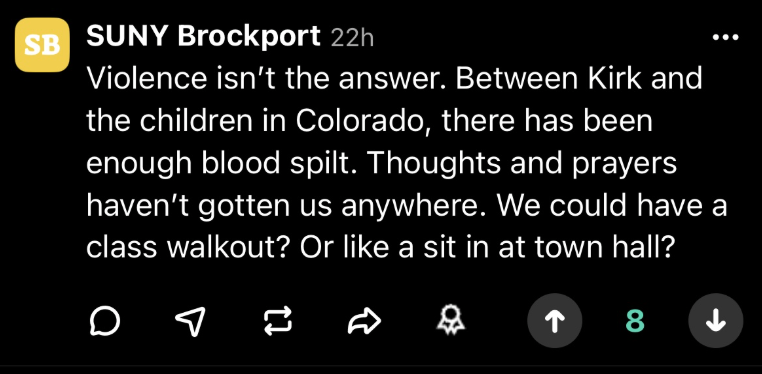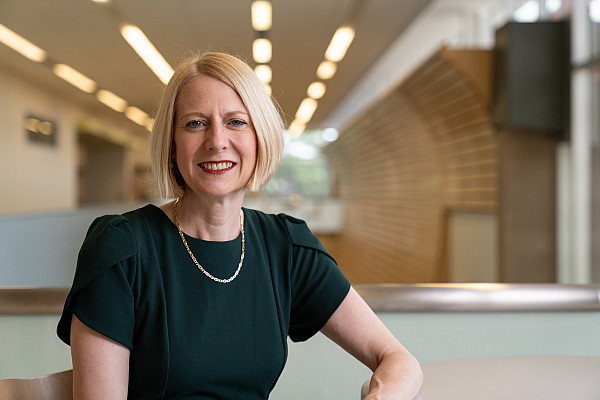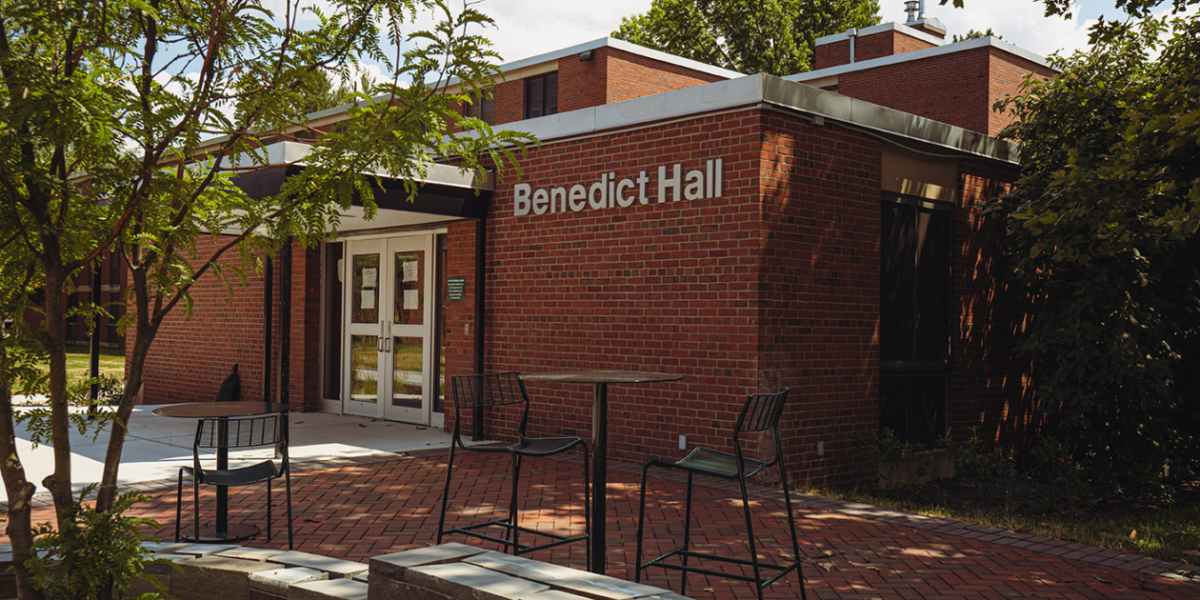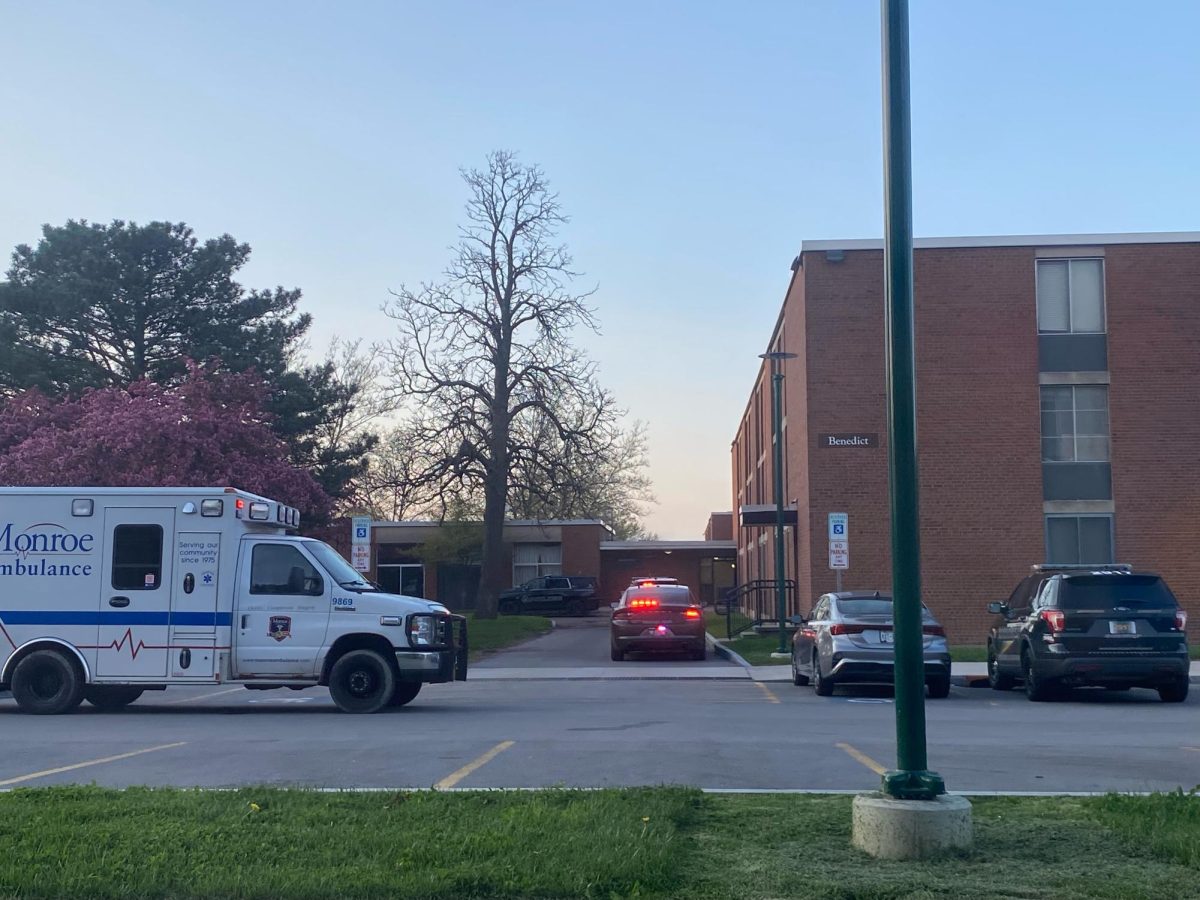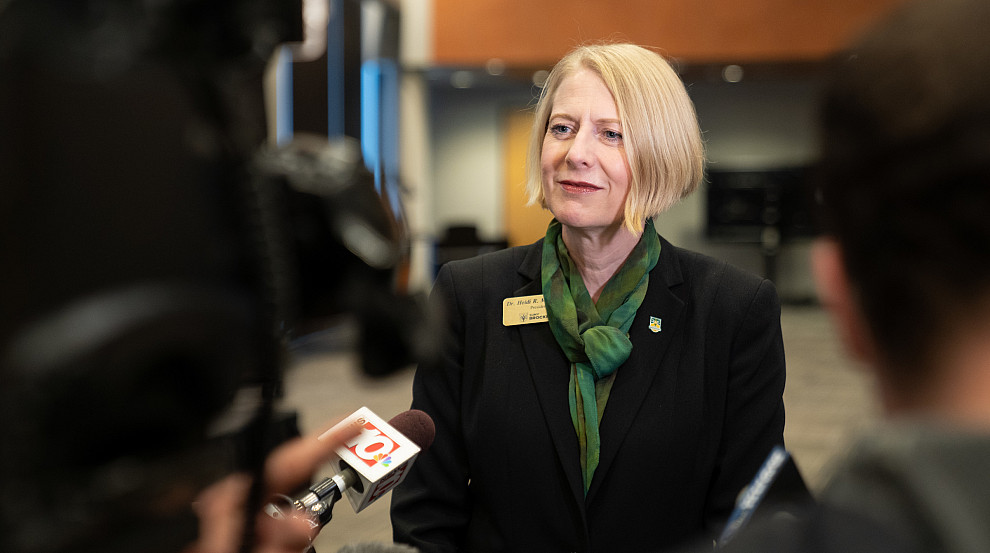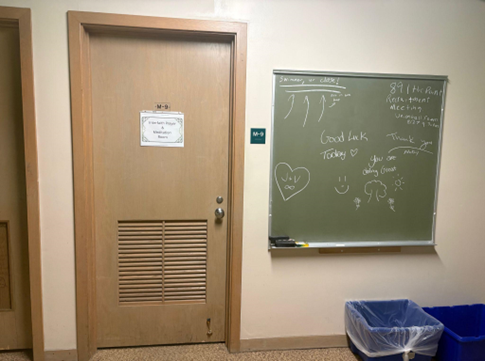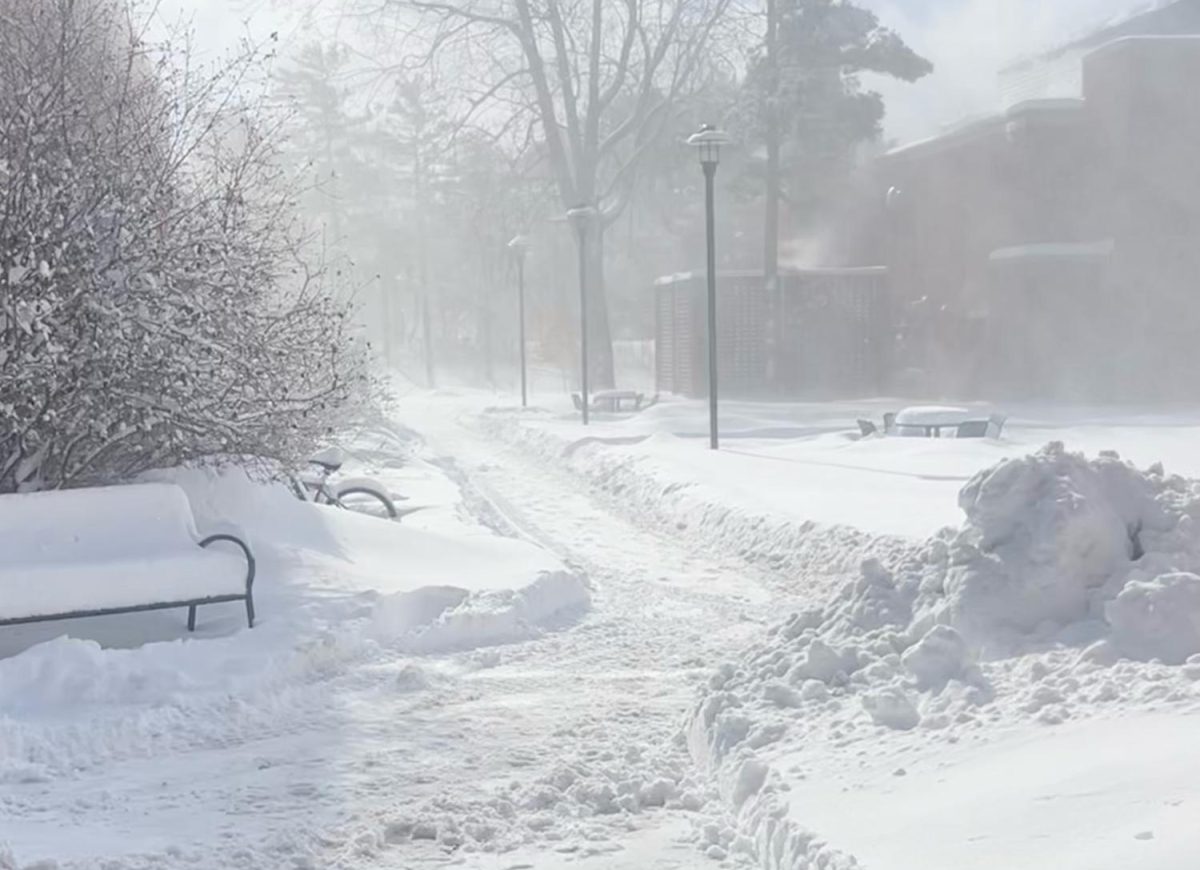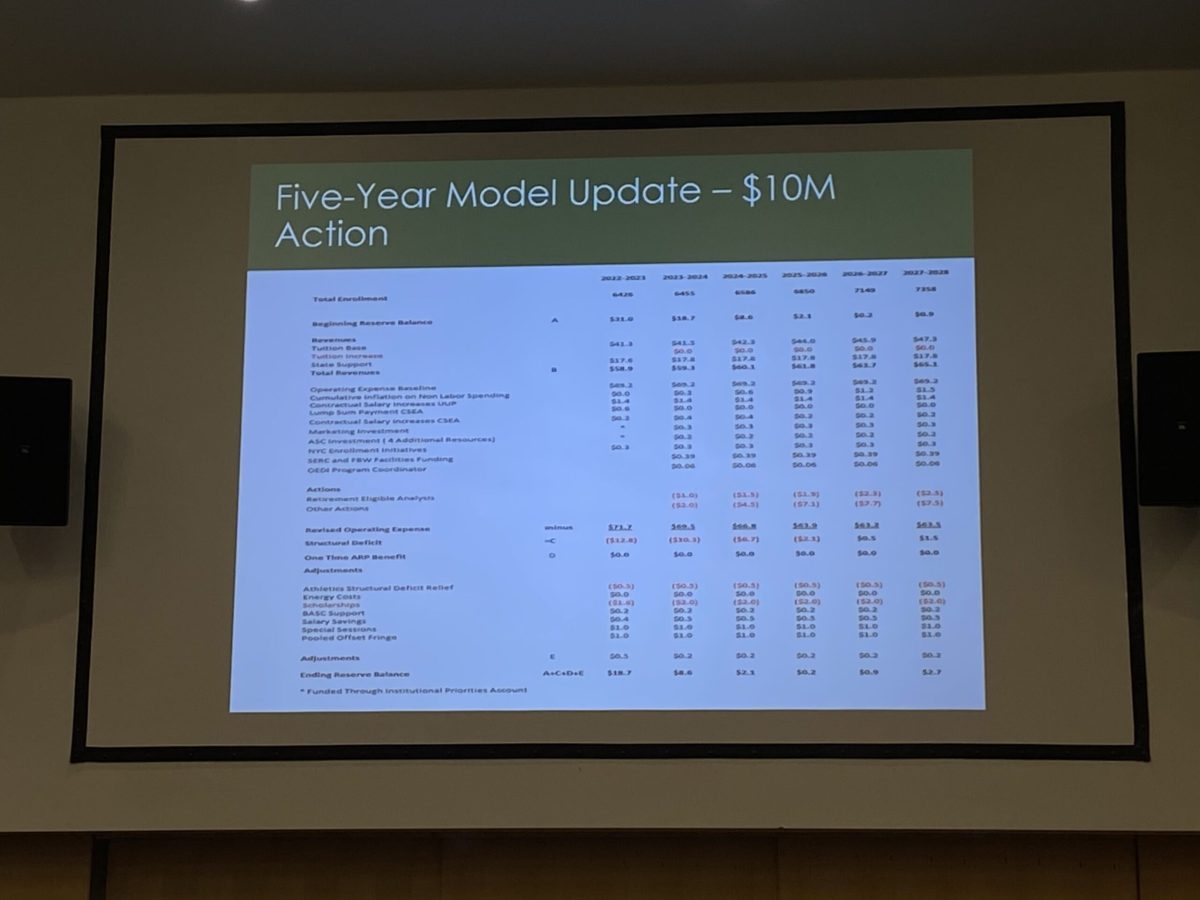Wednesday morning, SUNY Brockport president Heidi Macpherson hosted a Budget Town Hall meeting, accompanied by her Cabinet and the Joint Planning and Budget Committee (JPBC). During this meeting, Macpherson, vice president for administration and finance James Wall, JPBC Chair Dr. Darson Rhodes and Dr. Sara Kelly talked about each segment of their presentation, leaving time for questions at the end, where they hinted at upcoming projects and their plan for Brockway.
In the first part of the presentation, Kelly talked about the college’s retention rates. Since their drop during the pandemic, first-year student retention rates have steadily increased from 80.5% in fall 2021 to 84.8% in fall 2022.
“We know that student retention is our greatest opportunity, and we want to provide an amazing experience for our students to help them graduate from Brockport,” Kelly said. “We have positive early signs in terms of retention rate improvements, and we aim to grow a minimum of one percentage point each year. We’re looking at that incremental growth over time, and we’re showing positive signs trending in the right direction so far.”
The college has been working on a strategic enrollment management plan draft to help achieve higher retention and enrollment rates. They have three goals to increase recruitment.
“By 2025, we want to hit 1,250 first-year students each fall semester and 25 each spring semester,” Kelly said. “In 2028, we want to consistently enroll 600 transfer students each fall semester and 275 each spring semester. By 2029, we want to increase the number of graduate students by 12% each year, levelling out 600 annually.”
The college has three additional goals in hopes of improving retention and persistence.
“We have a bold goal of leading all SUNY comprehensive institutions for first-year retention rates by 2034, which is a really big goal,” Kelly said. “We do aim to have improved student retention rates by 2028 of 75% and then with that, improve graduation rates as we know those are very related. By 2028, we hope to have greater than 83% for transfer students and a graduate student retention rate of 75% by 2020.”
Currently, they have about 10 different sessions set up with different campus departments and academic schools, as well as three open sessions to provide more feedback moving forward.
“Within the plan, there’s several strategies and tactics that’s all available, which is on our website. If you want more information about how we are going to get there and what’s that going to look like, we’ve outlined our first draft with those strategies and those tactics,” Kelly said.
Wall spoke next, outlining their predictions for their reserve balance. As the college moves forward, they aim to reduce their structural deficit.
“The official structural deficit is approximately $10 million. Over the next four years, we’re going to reduce that structural deficit to zero and eliminate it by 2026-7,” Wall said.
Brockport has come up with a model to help save $10 million over the next five years. However, this will lead to severely reduced backfill and lower contractual salaries.
“We’ve lost 22% of our tuition revenue over the past six years,” Wall said. “Then on the salary side, which accounts for about 89% of our costs, we only went down about 5%, so this is the major driver for the structural deficit. This five-year model is a significant opportunity for us to manage the $10 million structural deficit if we just manage the staffing and the retirements, which should be able to account for about $2.5 million over the next four or five years.”
On behalf of JPBC, Rhodes provided four additional recommendation strategies that would help the college reduce spending over the next five years. Their main strategy is to possibly implement a near-hiring freeze, in addition to their goal of eliminating 100 positions on campus.
“The first strategy is a near hiring freeze, recognizing that an absolute hiring freeze would be impractical and have some very negative consequences,” Rhodes said. “The task force recommended the Cabinet consider as close to a hiring freeze as possible, as quickly as possible. As noted, the Cabinet has recognized the need to increase scrutiny and has promised to have increased deliberation as well about open positions as they come forward.”
After concluding their presentation, attendees were given the opportunity to ask questions to Macpherson and the other three presenters. Some used this opportunity to shed some light on updates regarding other aspects of campus, like Brockway.
“The current plan for Brockway is to try to create an integrated center for care,” Wall said. “To renovate Brockway, BASC would move out of Brockway into another location. We would then look at moving out of Hazen and moving that into Brockway. That proposal is currently submitted to the construction fund, because it’s a priority. We feel it’s probably one of the least disruptive projects, because the building is not being utilized right now.”
With one less dining hall, concerns were raised over enough dining opportunities on campus, which Macpherson hinted at exploring.
“There are other opportunities that are being explored in the Union, including the space that is known as ‘the Gallery,’” Macpherson said. “That space is something that could be looked at again, should we need to have additional space for students, a sort of traditional dining. There are other opportunities that are currently being explored, which I won’t go into right now, but it could be really exciting looking forward for that option.”
Brockport’s ambitious goal to save $10 million over the next five years will be a formidable challenge given the scale of projects like Brockway and ongoing construction. Only time will tell whether or not the college will reach its objective.

